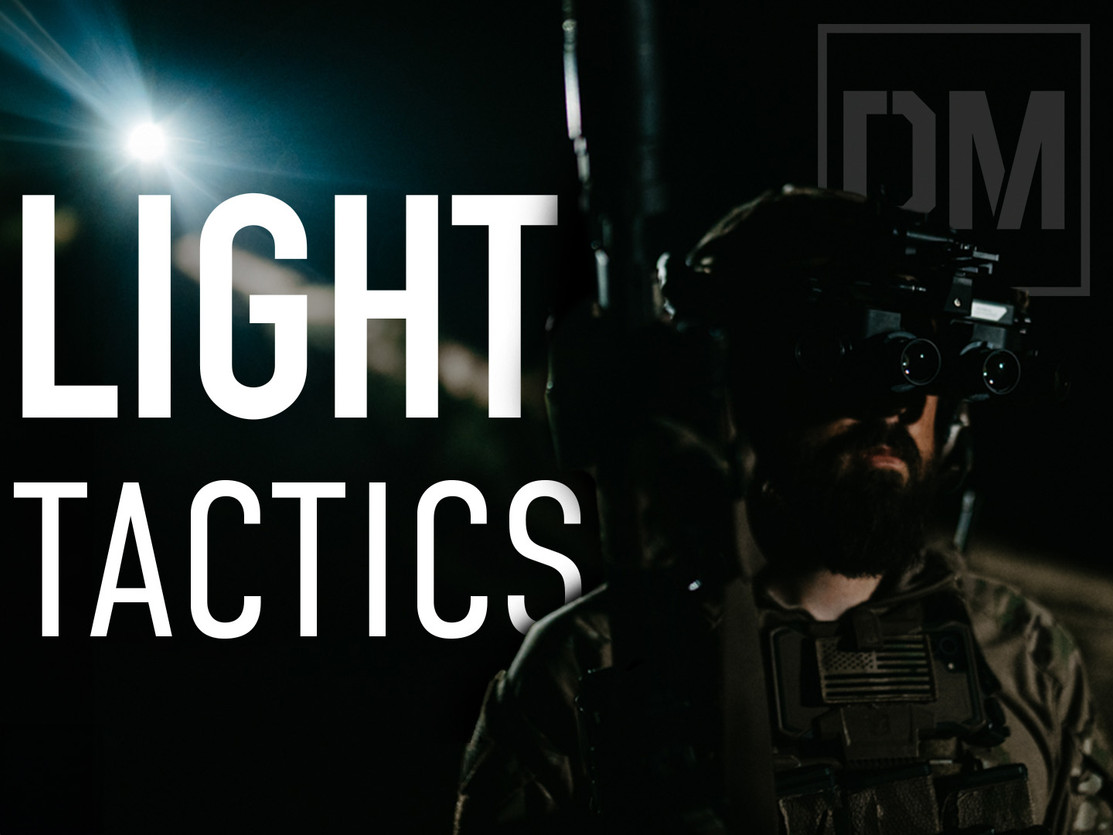Posted by Tim Marshall on Oct 28th 2024
Lessons from Low-Light CQB Training
This past weekend, I had the opportunity to help teach a low-light shoot house class in Alliance, Ohio, and it provided valuable insights into some of the common challenges students face. I want to share a few key takeaways surrounding weapon light tactics that could improve your low-light training sessions.
Keeping the Rifle at Low Ready
One of the most frequent mistakes students make is keeping their rifle up at eye level as they move through spaces. While this might seem like a good way to stay ready to engage a target, it actually limits your vision and situational awareness. When your rifle is raised, it blocks your ability to see the lower parts of a room or space, such as a person’s hands, waistband, or surroundings—critical elements in identifying potential threats.
The solution? Train to keep your rifle in a low-ready position. By lowering the rifle to about baseboard height as you clear a room, you maintain a full field of view, allowing you to observe and assess the situation before deciding to engage. Once you’ve positively identified a threat (PID), then raise your rifle, disengage the safety, and fire if necessary. This approach helps reduce instances of mistakenly engaging non-threats or no-shoot targets.
Building Confidence with Your Optic
Another common issue stems from students lacking confidence in quickly acquiring their red dot optic. If you’re unsure about consistently bringing the rifle up to your eyeline, it can lead to bad habits, such as keeping the rifle raised and moving in the dot. This decreases your situational awareness and slows down your ability to react appropriately.
To overcome this, make sure your optic is mounted at a height that naturally aligns with your eyeline when you're in your fighting stance. A properly mounted optic eliminates the need to “hunt” for the dot, giving you confidence to keep the rifle down until you need to engage. Consider working with a laser that has visible light override as well, giving you a secondary aiming point if you can’t immediately acquire your red dot.
Mastering Low-Light Techniques
Low-light training amplifies the need for good habits. Instructors can quickly spot what you're focusing on by watching where your white light is directed. A common mistake in low-light environments is casting the light too low, illuminating the floor rather than critical areas where threats may be hiding.
Make it a habit to aim your light into the hard corners of rooms or spaces, where threats are more likely to be, instead of just a few feet in front of you. When scanning, push the light all the way through open doors or around furniture to reveal hiding spots and avoid casting large shadows where threats could conceal themselves. Remember, shadows are the enemy in CQB—they give bad actors a place to hide.
Cross Covering with a Partner
In team environments, lighting discipline becomes even more critical. Rather than both partners focusing their lights on the same dead space, you should cross-cover. By each partner illuminating the opposite side of the room, you reduce shadows and provide full visibility for each other. This allows you both to scan and process more information, significantly increasing your situational awareness and safety.
Avoid the Hot Spot Trap
Many students have a tendency to fixate on the hot spot of their light—the brightest part of the beam. This is problematic because it slows down your reaction time. By the time you spot something in the hot spot, you've already overdriven the target and need to snap back to it. Instead, train yourself to work off the leading edge of the light spill. This allows you to see threats earlier and react faster, giving you an advantage.
Another issue with the hot spot is that it can sometimes be too bright, especially on light-colored targets, making it hard to PID important details like whether a person is holding a weapon or wearing a badge. Instead, use the softer spill of your light to illuminate the target more gently, improving your ability to make positive identification.
Final Thoughts
These are just a few of the observations and lessons learned from the recent low-light class. If you're serious about CQB or low-light training, remember that it's not just about having the right tools—it's about using them effectively. Keep your rifle out of your face until you're ready to shoot, ensure your optic is properly mounted, and use your light to see, not just to navigate. Train deliberately, identify threats accurately, and avoid the temptation to rush through these critical processes. With consistent practice, these habits will become second nature and vastly improve your performance in high-stakes environments.

